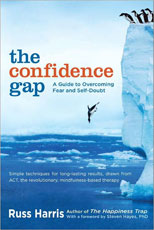"How would you feel if you were on that march, knowing what lay in store for you? In his autobiography, Long Walk to Freedom, Nelson Mandela described this march as a 'tonic.' For thirteen of his years in Robben Island prison, he did it every single morning. And as he did so, he engaged fully in his experience: he noticed the birds flying gracefully through the sky, the cool caress of the wind blowing in from the sea, and the fresh smell of the eucalyptus blossoms. He wasn't lost in thoughts about the hard work ahead of him or the miserable days behind him; he was living fully in the present moment.
"Fortunately, we don't have to be locked away in prison to appreciate the birds, the wind, and the flowers. If we stop rushing around on automatic pilot and use our five senses to connect fully with the world around us, we will find much more fulfillment. Yes, we all know the saying, 'Stop and smell the roses,' but how often do we actually do it? . . .
Engaging in Your Morning Routine
"You can turn any part of your morning routine into a mindfulness training session: brushing your teeth, shaving, going to the toilet, having a shower, getting dressed, making the bed, making breakfast, eating breakfast, having a cup of tea, and so on. Specifically practice developing your engagement and defusion skills. For example, if you're making a cup of tea, engage in every little step of the process, using all five senses. And observe what is happening with the utmost curiosity, as if you've never done it before.
"Notice all the different sounds involved, listening to the changes in pitch, volume, timbre, and rhythm: the crescendo of the kettle filling up, the sharp click of the 'on' switch, the rumble of boiling water, the hiss of escaping steam, the swoosh as you pour the water into the cup, the trickle as you lift the teabag out, and the gentle splosh as you add sugar or milk.
"Notice all the different visual elements, including shapes, colors, textures, and light and shadow: the thick rush of steam spouting from the kettle, the misty swirls of steam rising from the water in the cup, the light rippling on the surface as you dunk the teabag, the dark stream of tea diffusing through the hot water, the fluffy clouds of milk billowing up to the surface.
"Notice all the different body movements required: the effortless interaction of your shoulder, arm, hand, and eyes as you're lifting up the kettle, turning on the tap, replacing the kettle, pouring the water, dunking the teabag, and so on.
"As you do this, see if you can discover something new: something you previously took for granted. Have you ever truly paid attention to the patterns of steam rising from your cup, or the sound of the spoon clinking against the side, or the movement of your shoulder when you dunk a teabag?
"As you do this practice, your mind will try to hook you with thoughts about all the things on your to-do list. Let those thoughts come and go like passing cars, and engage in what you are doing here and now. Of course, from time to time your mind will pull you out of it. The moment you realize this, gently acknowledge it, unhook yourself, and engage once again in making the tea."
